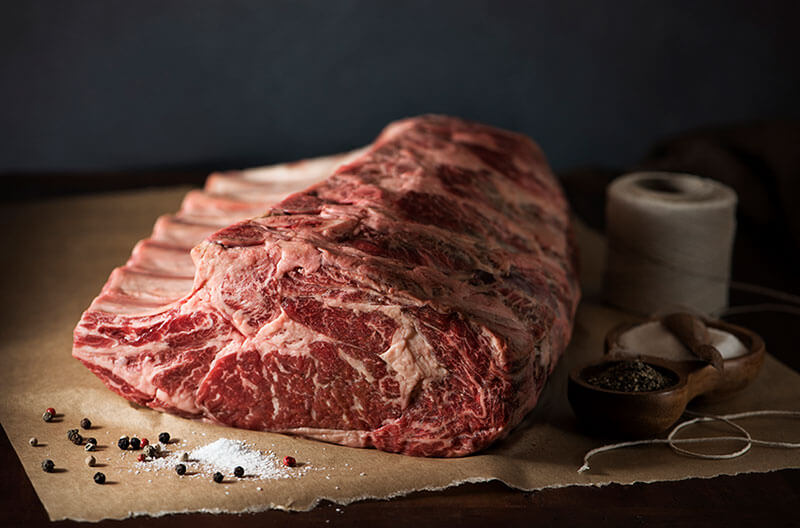Sponsored content
For years, meat suppliers and retailers have had to choose their ventures and purchasing selections based on USDA data, historical data and first-hand experiences. The problem is, a decision is only as effective as the hypothesis on which it’s based, which can result in missed opportunities. 
The coronavirus pandemic challenged all sectors of the grocery industry supply chain, and the meat department was no exception. One of the most disruptive years in history affected how retail grocers consider forecasting, promotion planning, purchasing, and the future of their industry. Entering into such unpredictable circumstances equipped with artificial intelligence and powerful scenario modeling can help minimize the risk and give retailers a competitive advantage during normal markets.
Staying ahead of the curve
Basket sizes, supply and consumer demand all changed during the pandemic.
Meat consumer demand continues in an increasingly constricted supply environment; retailers need to meet that demand and stay ahead of the curve by embracing new technologies or strengthening their traditional buying techniques with artificial intelligence.
The 2021 Annual Meat Conference’s “Power of Meat” revealed that meat and poultry sales grew 34.6 percent amid the pandemic on more buyers and trips and greater spending per buyer/trips.
Reflecting unprecedented growth, the meat department sold an additional $7.9 billion and 1.4 billion pounds between March 15 and July 26 versus the previous year. Nearly half of shoppers, 48 percent, bought more meat to support the greater number of at-home meal occasions.
Beef generated 61 percent of new fresh meat dollars, with particular strength for ground beef.
Outbreaks affecting product availability, consumer behavior
African Swine Fever seems to have accelerated a background consumer trend toward more diversified protein intake in China, with consumers trying a wider range of protein sources, like seafood, beef and poultry.
Could COVID-19 have a similar effect on the consumption of plant-based foods in Western nations? The virus is adding momentum to an already rapidly growing trend toward reduced intake of animal-based foods.
Research shows a growing number of conversations surrounding plant-based proteins. And although consumers are looking to reduce animal protein intake, they still prefer the taste of real animal products.
Scenario planning can consider all of these variables and forecast how your consumers will behave.
E-commerce becoming a force
Retailers need to be aware of trends in e-commerce as well, as the pandemic caused a seismic shift in this realm.
Jordan Knapp, head of new markets for Shopify, said that the trend of turning stores into distribution centers will continue, especially as freight continues to rise. Travel and lockdown restrictions pushed the consumer online and there is no going back to pre-COVID times for retailers. E-commerce is progressing with multiple shopper channels and continually changing purchase behaviors.
Globally, 64 percent of consumers want their orders shipped for free, while peak-level e-commerce and strict same-day shipping cutoff times have made it difficult to meet rising customer demands. And 67 percent of U.S. consumers expect either same-, next- or two-day delivery, while 72 percent of global consumers want brands to use sustainable packaging.
With the cost to fulfill orders soaring, brands must turn fulfillment into a strategic asset. This is paramount to maintaining brand reputation – ensuring you have the products for your consumers.
With so many variables in the industry, meat buyers need efficient and accurate tools to look at upcoming seasons and predict whether or not markets will follow traditional trends and how processing plants will behave in the future.
Simulate market conditions with less risk
In comes DecisionNext, which is designed to help meat, grocery retail and related agricultural companies. This platform lets users simulate market conditions to quickly create risk-aware forecasts. Additionally, DecisionNext helps companies understand the risk and expected value of different transaction types, like fixed price deals, formula deals, and hedges.
Receive real-time recommendations based on machine learning refined with your unique market insights. Select your data sources with help from DecisionNext industry experts. This model identifies the most predictive data, which you approve or modify to produce automated recommendations that continue to improve as the system gets more data to learn from.
A meat buyer can get up-to-the-minute risk aware forecasts and decision recommendations based on a combination of artificial intelligence and your expert insights. The tools available help your organization better evaluate a range of alternatives and options in operations, sales and procurement, then recommend actionable decisions.
DecisionNext helps you understand the uncertainty of your market so you can know how confident to be in a forecast, as well as your downside. Volatility in the buying and selling of value-added meat creates tremendous complexity as well as tremendous profit opportunity for forward-thinking businesses. Buying early increases the risk that the market will move, putting distributors and retailers in an uncomfortable position, but waiting too long increases the risk that the products may be unavailable. Plant closures, foodservice shutdowns, consumer behavioral changes and production line slowdowns are some of the many scenarios that can be taken into account. These changes in behavior are layered onto item-specific seasonal and holiday patterns to predict the exact months of higher spot pricing and greater gaps to purchase.
Making unexpected market connections
As we push through 2021, pork buyers are considering the effects of lingering COVID-19 concerns, African Swine Fever and a new administration affecting pork exports. For summertime bacon, meat buyers have to monitor all of these factors as well as the restaurant industry’s use of pork bellies.
DecisionNext’s platform can help make these decisions with the use of prescriptive analytics, in this case predicting when the price per pound for derind pork bellies will increase from February through July.
Learn more from DecisionNext’s white paper, which highlights case studies of how this innovative platform can optimize strategies for meat buyers today.

